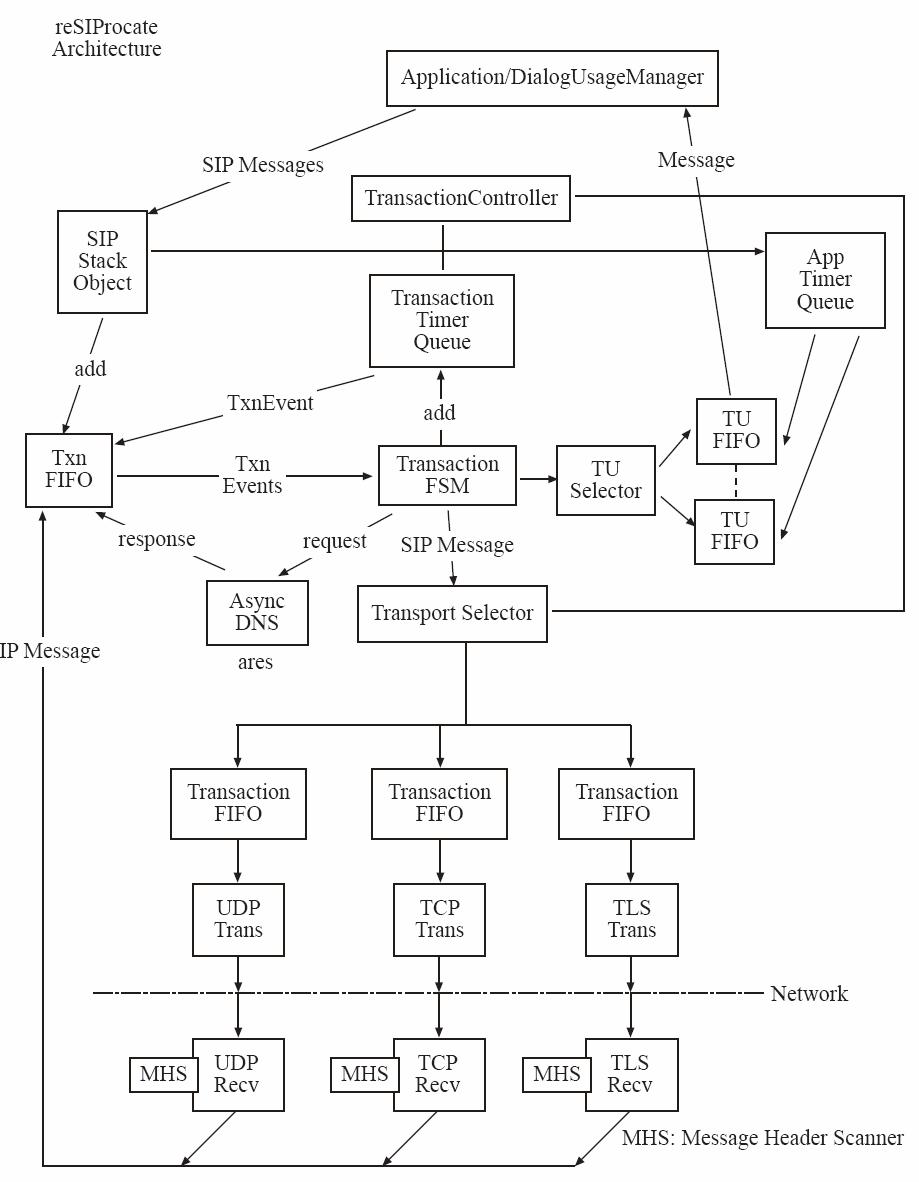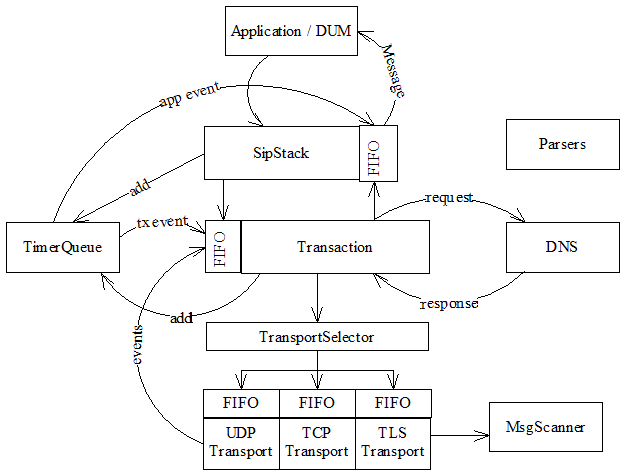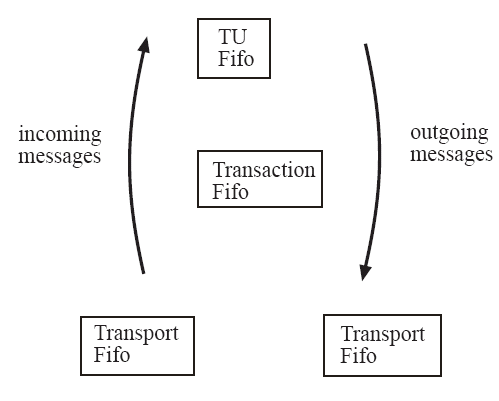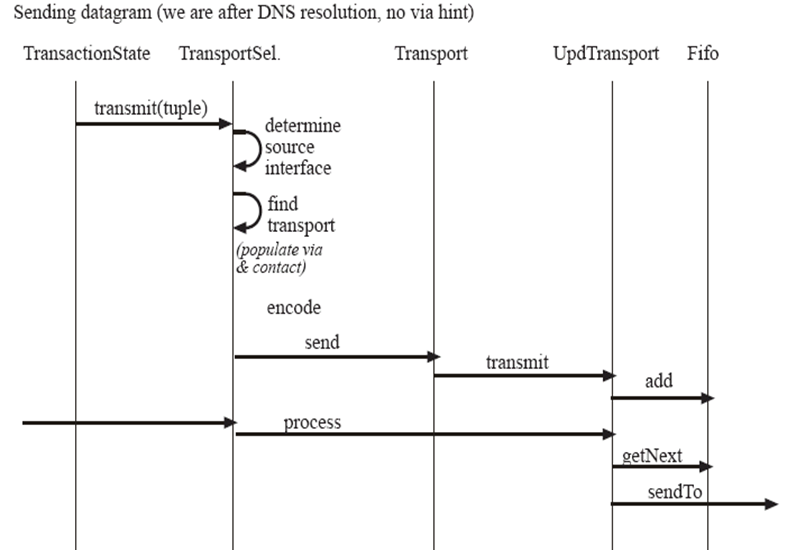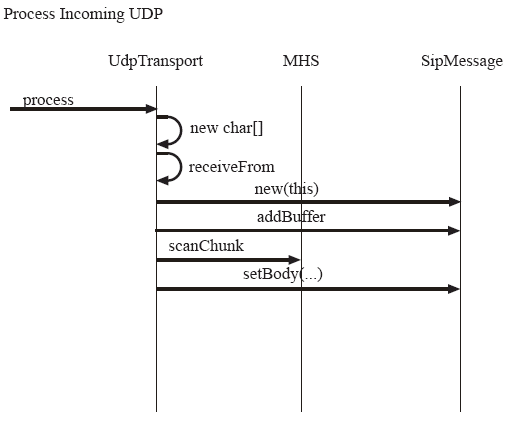The reSIProcate SIP Stack library
Olive is namespace,Cyan is class,Orange is class’s functions,Red is static variables or functions,green is functions,blue is reserved key words.
1、resip_fundamentals – Resip’s Fundamental Design
The resip stack plays the role of the UAC/UAS core, and the app plays the role of the @ref resip::TransactionUser “Transaction User” (or TU), both as described in RFC 3261. For the unfamiliar, the TU sends and receives @ref resip::SipMessage “SIP messages” from the core, while the core handles details like retransmissions, timeouts, and interactions with the transport layer. The UAS/UAC core will also inform the TU when transactions end.
2、resip_responsibilities – Resip’s Other Responsibilities
In addition to satisfying the duties of the UAS/UAC core, resip provides additional functionality, such as:
- @ref sip_parse “SIP message parsing” : Resip supplies parse-code for all the core @ref sip_grammar “SIP grammar elements” (this parse code is fairly liberal, and does not do deep validation).
- @ref make_sip “SIP message construction” : Resip supplies code for constructing SIP messages according to the rules in RFC 3261.
- RFC 3263 DNS logic : The resip stack carries out all RFC 3263 DNS lookup logic for you. This is actually a non-trivial task, if you haven’t read 3263.
- Other RFC support : Wherever possible, resip provides code that implements all MUST and SHOULD-level requirements from supported RFCs(a lot of this code lives in resip::Helper).
3、resip_big_picture – The Big Picture
The basic anatomy(分析) of a SIP application running on top of the resip stack is as follows. You have:
– One or more subclasses of resip::TransactionUser (the “app layer”)
– A single instance of resip::SipStack
– One or more subclasses of resip::Transport.
These are all connected together through a combination of message-passing, and direct function calls(usually reserved for stuff like configuration).
4、resip_usage – Usage
- Subclass resip::TransactionUser : The part of resip::TransactionUser that is left up to the app-writer is the code that reads messages out of the resip::TransactionUser‘s message-queue, and processes these messages. What the resip::TransactionUser does with these messages is very open-ended, but the stack expects that every request will get a final response.
- Initialize the logging system : See resip::Log::initialize() (in rutil) for details.
- Create a resip::SipStack : This part is pretty simple.
- Add some transports to the stack : Use resip::SipStack::addTransport() to do this.
- Register your resip::TransactionUser : This is done with resip::SipStack::registerTransactionUser().
- Set up a process loop for resip::SipStack : Typically this is done by creating a resip::StackThread, and running it (this will give SipStack a thread of its own). If you want to run your app and the SipStack in the same thread, use the code in StackThread as an example, and have it also do processing for your TransactionUser.
5、resip_low_detail – The Internals
The resip stack can be broken down into the following large components:
- resip::SipStack : This is the part that the resip::TransactionUser (app-layer) talks to. It also is responsible for coordinating(协调) the rest of the major components in its process loop.
- resip::TransactionController : This is the part that manages all the transaction-state for the stack.
- resip::ExternalDns : This is the DNS resolver. By default, this is a resip::AresDns, but the app-writer can override (not a very fun thing to do, really).
- resip::TransportSelector : This is the part that handles the preparatory work for sending a SIP message out on the wire. This includes choosing a transport to send on, filling in parts of the SIP message that can only be filled in when we know what transport we’re sending on, and writing the SIP message into a buffer for the transport layer.
- resip::Transport : This is the base transport-layer class. Concrete implementations of this include resip::UdpTransport, resip::TcpTransport, and resip::TlsTransport. There may be any number of these.
- resip::TuSelector : This is the part that determines which TU (there may be several) a received SIP message should be sent to. It also decides how to route other message-passing from the stack (see TransactionTerminated and ConnectionTerminated)
Here’s a description of the typical flow:
- resip::SipStack‘s main process loop runs, eventually causing one of the resip::Transport objects to read some bits off their fd. These bits are run through a pre-parse (tokenizes the message into header field values), and a basic validation (checks to see whether mandatory headers are present, and performs well-formedness checks on a very small number of headers). The resip::SipMessage is then posted to the resip::TransactionController‘s message queue.
- resip::TransactionController gets the resip::SipMessage, and creates a resip::TransactionState for it (supposing it is a new transaction). The transaction-state logic is carried out, until a determination is made on whether to send it to the resip::TransactionUser (app-layer).
- The resip::SipMessage is passed to the resip::TuSelector, which posts it to the appropriate resip::TransactionUser, using a chain-of-responsibility type pattern.
- The resip::TransactionUser gets the resip::SipMessage, and does any processing it needs to. If the message was a request, the app-layer will post a response to the resip::SipStack, which will place the message in the resip::TransactionController‘s message queue.
- resip::TransactionController will get the resip::SipMessage, perform any core transaction-state processing, and figure out where the message needs to go (back to the source; although if this were a request, it would consult the resip::ExternalDns using an async call). Once a target has been chosen, the resip::SipMessage is passed on to the resip::TransportSelector.
- resip::TransportSelector chooses what transport to send the message on, fills out some stuff in the resip::SipMessage, encodes it to a buffer, and posts it to the chosen resip::Transport.
- resip::Transport throws the bits out on the wire.
